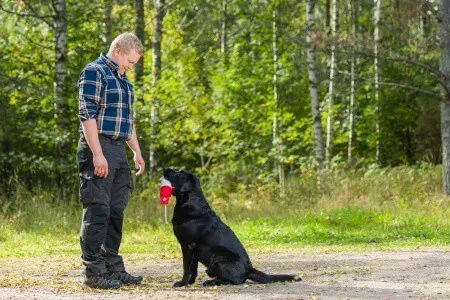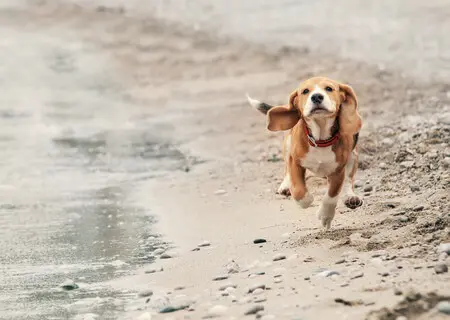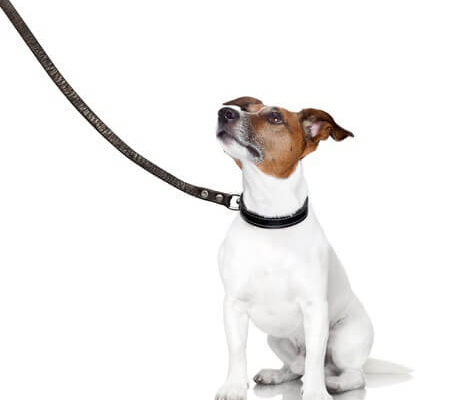Dog whistle training

Traditionally, dog whistles were considered the domain of the gun dog and herding dog handler, but they are now becoming increasingly popular with trainers as well as dog owners who want to achieve better distance control of their dogs.
You can use a dog whistle for almost any command, but the primary benefit is to communicate the commands you are likely to need when your dog is at a distance from you. Although there are ‘standard’ commands, you don’t need to stick rigidly to these. The most important thing with dog whistle training is consistency, so decide on your signals and make sure you stick to them.
The three main standard dog whistle commands generally used are:
| Action required | Verbal command | Whistle command |
| Sitting at a distance | Sit | One long blast with your hand raised and open |
| Calling to you | Here or Come | Multiple whistle pips with both arms outstretched to side |
| Redirect to another direction | Two whistle pips and arm outstretched to new direction |
Getting started with dog whistle training
Using the whistle at first may take a bit of getting used to. Practice producing short sharp pips and long blasts.
Calling your dog to you:
The most important action to master is the recall and it is necessary that your dog knows that coming back to you is going to be rewarding! Use treats and plenty of fuss when they return and never punish your dog regardless of how long it took to get him back from what he was doing before!
Recalling a young puppy is usually easy as they are not confident enough to move too far away from you. Take advantage of this time to create a recall practice. Get him/her used to the dog whistle and coming back to you when commanded. Whistle him/her to come at feed time or for a treat or toy. They will soon learn that something good happens when they return!
Practice recall in the garden and when out walking. Be prepared to step out of your comfort zone in terms of your own behaviour. Clapping your hands, jumping up and down and generally making yourself noticeable and interesting will get their attention. However, if this doesn’t work, try running in the opposite direction to your dog as their natural chase instinct nearly always brings them running. Make sure you give plenty of praise when they do get back!
The Distant Sit: This is an important command to master early in your dog whistle training programme. When your dog is in the sit position, you are more likely to have their full attention to any follow up commands. The added benefit of mastering this command is that it stabilises any situation.
Assuming your dog has mastered the close up sit command accompanied by a raised hand signal. Start to replace the verbal command with the whistle. (i.e. hand signal and whistle). This is one long blast. If they do not respond, then add the verbal command to reinforce your request until they are used to the whistle. With practice your dog will gradually respond to just the whistle. You will need to build this up slowly, so start with practicing a few steps back, praise when they get it right and gradually extend the distance. It will take a number of sessions to build up distance, so have patience and take it slowly.
With the distant sit mastered in your dog whistle training you can then start to introduce the whistle to recall. To start with, you could just whistle yourself unaided and gradually move onto the dog whistle as your distances increase. Practice walking away from them a short distance, then using the pip-pip to recall. Sometimes return to your dog instead of doing the recall. This will stop your dog anticipating the command or always assume a sit/stay is followed by a recall.
Unless you use your dog for shooting or herding, most people are happy to achieve distant sits and a good recall with their dog whistle training However, if you want to know more about gun dog training the following links are useful.
Labrador and Spaniel whistles and trialer whistles are available from Paws Plus One website.





